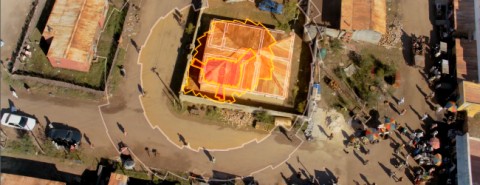Remote-controlled warfare

In July the Obama administration released a two-page report on the number of people who were killed by U.S. “targeted attacks” from 2009 to 2015. The official numbers were between 2,372 and 2,581 combatants, and between 64 and 161 civilians. The Bureau of Investigative Journalism has contested those numbers, putting the actual number closer to 4,500, including 474 civilians. The higher number means that over a six-year period, during U.S. military operations in an undeclared war, U.S. drone or unmanned missiles killed two people a day, and a civilian every four days.
Director Gavin Hood’s film Eye in the Sky—released last month for streaming—joins Rick Rosenthal’s film Drones and Andrew Niccol’s Good Kill in raising questions about this form of warfare.
In Eye in the Sky, British colonel Katherine Powell (Helen Mirren) is tracking terrorists in Nairobi. She’s in London, but with the use of remote cameras she locates a known leader in the terrorist organization al-Shabaab. The terrorist is exposed and can be captured, and Powell receives the directive to pick her up. But at the same time, little remote cameras called cyborg beetles reveal that two people are about to unleash a suicide attack in a crowded Nairobi neighborhood. The colonel’s aim shifts to killing the attackers, until suddenly a nine-year-old girl, Alia (Aisha Takow), wanders into the frame. If the terrorist dies, Alia will die too.




